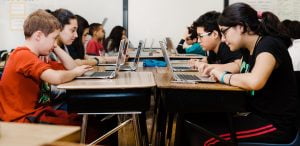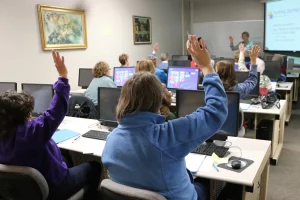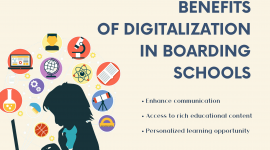ABOUT
As the world of education is changing, students today need more than just textbooks and notebooks to succeed. Education stakeholders have been searching for innovative ways to engage students as well as teaching methods that support the learning process. Historically, many schools have not used technology because it was expensive to invest in and created privacy concerns. In recent years, however, we’ve moved past these misconceptions about technology by realizing that using digital tools offers several benefits for students. There are several different types of digital tools that can help teachers teach in today’s classroom.
With the steady growth in technology and the demand for quick changes in information, nothing can save us from being lost without efficient methods of digital learning. Digital learning offers a personalized and engaging experience for students. Digital learning aids students with differentiated tools that allow them to work at their own pace and achieve the greatest level of understanding. Digital learning is now becoming a common part of the classrooms and is revolutionizing how future generations will learn.
Digital Classrooms transformed the way of Learning
Learning is a process that never ends, and the ways we learn are constantly evolving. Earlier this year, we unveiled our new Digital Classrooms to give students access to the latest and greatest learning tools. These labs are fully equipped with interactive whiteboards and projectors, as well as smart boards so students can incorporate technology into their lessons.
Our teachers have been using these labs to create engaging lesson plans that allow students to learn in new ways while still staying true to their values of inclusivity, diversity, and accessibility.
We believe that a student’s success is directly related to how they’re able to engage with their education. With these new digital classrooms, we’re able to provide every student with an opportunity for success by creating a space where they feel comfortable asking questions and making mistakes along the way toward reaching their goals.
Here are some of the benefits of digital learning:
Learning to the Next Level
Digital learning is a technological revolution that has changed the way we learn. It’s also changed how we teach. With digital learning, teachers can work with students in ways they never could before—using videos and animations to illustrate concepts, creating interactive scenarios for students to practice their skills, and even bringing in experts from all over the world to help students learn more effectively.
Digital learning makes education better for everyone involved. Digital learning is the future of education. It’s a way to engage students in an active, immersive experience that combines the best of online and offline teaching methods.
All the information is in one place
Learning is a journey, and it’s not always easy to keep track of where you’ve been and what you’ve learned along the way. With digital learning, everything is organized for you so that when you need it again, there it is—ready to help you get back on track.
With digital learning, you can find all your information in one place and learn how to use it. Digital learning is also easy to use and share with others. It’s a great way to learn new things and prepare yourself for the future.
Students can learn anywhere and at any time. They don’t have to be at their desk or with a teacher for them to get the knowledge they need. It’s easy for students to get distracted by social media and other activities, but with digital learning, everything is contained within one platform.
Increased Interaction
Digital learning has increased interaction between students and teachers. Now, digital learning allows teachers to interact with their students during class time. Teachers can give live feedback and encourage students when they are struggling with a concept or assignment. Digital learning also gives teachers more time to work with individual students on difficult concepts or assignments by allowing them to work at their own pace in an online environment.
Digital learning has increased interaction between students and other people outside of school as well. With digital tools, it’s easy for students to collaborate on projects with people around the world who share similar interests or goals. Students can connect with other learners through blogs, forums, wikis (eLearning), social media platforms (eLearning), and more.
Virtual Homework Assignments
A digital learning environment has the benefit of being able to assign homework online. This allows teachers to provide students with virtual homework assignments, which are assignments that are completed online and submitted electronically.
Virtual Homework Assignments are a great way to help students understand the material they are learning. It gives them a chance to practice the skills they have learned in class and see if they can apply them to new situations. Students can complete their homework online, which allows them to do it at their own pace. This allows students who might not be able to attend school due to illness or other reasons still have the opportunity to get credit for their work.
The flexible learning environment and personalized methods
Digital learning is a method that lets you take the classes you want when you want them. You can watch lectures online or on your phone, and you can choose to work on assignments at home or in the library. If you’re working a full-time job, this flexibility makes it easier to learn without having to spend extra time commuting or taking time off from work.
Digital learning also provides a personalized experience for each student. Each student can be assigned different activities in each course and receive different grades based on their performance in those activities. This means that students who need more help with a certain concept will receive better grades than someone who doesn’t struggle with that concept as much.
Takeaway
So what does the future hold for our digital classrooms? More cross-platform compatibility will be essential to improving the educational experience in these classrooms. Teachers and students may also be able to benefit from more intuitive technology, which will help them keep up with the fast pace of change surrounding our world today. But perhaps the most intriguing improvements in these classrooms are coming from beyond education technology – innovations like 3D printing and biometrics could directly impact classroom learning. These classes can be amazing if they accommodate the unique needs of each student. And as technology continues to evolve, it will be very exciting to see where these classrooms take us next.
For any queries related to parenting, schooling, or any student-related tips, click here to check out our latest blogs.













